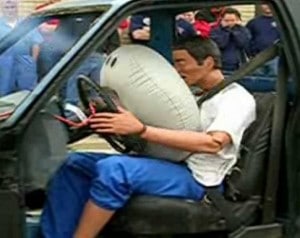Air bags were designed to protect automobile drivers and passengers who were not wearing seat belts, and also to give additional protection to those who were wearing seat belts. Unfortunately, air bags can actually injure or even kill the drivers and passengers. Older cars that were among the first to employ air bags are less safe than newer cars with more advanced safety features. The original air bags were deployed with a lot of force, and did not have the technology to change the amount of force according to the person’s size or weight, and whether or not they are wearing seat belts. Today’s air bags are able to adjust the speed of deployment according to the seat occupant’s weight, size, position and whether or not they are wearing a seat belt.
Thanks to these improvements in air bags and other safety technology, air bag related fatalities are now less common. However, there are still many air bag related injuries reported. While serious injuries are less frequent, severe injuries and fatalities can still happen. Most injuries or fatalities occur when a person is sitting too close to the airbag, not properly restrained in their seat belt, or to short statured adults, children or babies that are in child safety seats.
Small statured adults are some of the most commonly injured or killed by air bags. Often, a short driver has to move their seat much more closely to the air bag than is recommended for safety. All drivers should be aware of the type and location of their automobile’s air bags. Wearing seat belts correctly, moving the seat back as far as comfortably possible, and tilting the steering wheel down to direct it away from the head and neck are three of the best ways to avoid being injured or killed by the air bag. Research shows that the safest distance between the air bag and a person’s chest is 10 to 12 inches. Short adults can use pedal extenders to help them achieve this distance. Another option is to purchase one of the newer vehicles that come standard with pedal adjusters.
Babies and small children who are restrained in rear facing child safety seats are also commonly injured or killed by air bags. Since rear facing restraints put a baby’s head close to the air bag, grave injuries and fatalities often result in accidents where a baby in a rear facing seat are placed in the front seat. Babies are absolutely safest in the back seat. If for some reason they have to be placed in a front seat with an air bag, they should be in a front facing child safety seat, and the seat should be moved as far back as possible.
Many newer vehicles either have switches to turn the passenger air bags off and on, or else they have sensors that automatically adjust the speed of deployment. Some even automatically turn off if the person is under a certain weight. Air bag improvements have lowered the fatality rate, but basic safety measures and common sense can lower it more.

